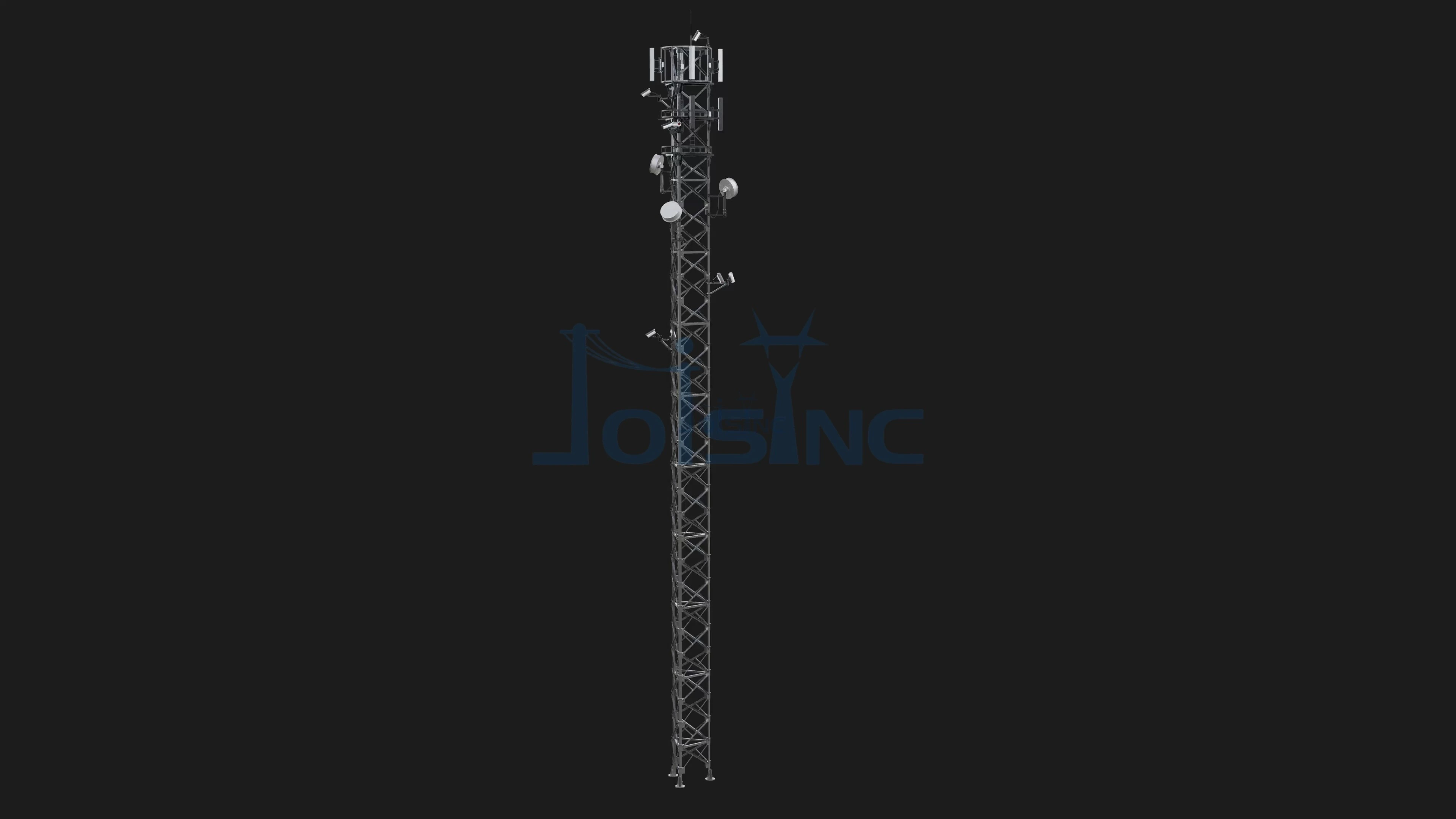Steel Communication Tower Tri-Leg Galvanized Angle Design for Long-Term Outdoor Use | Zexing
The Three-Legged Angle Steel Communication Tower is designed for medium to large-scale telecommunications networks. Its triangular base structure ensures maximum stability and reliability, even under extreme environmental conditions. This tower is often used in urban, suburban, and coastal areas where space optimization is essential, and its compact design makes it ideal for restricted spaces.
· Stability and Wind Resistance : Ideal for use in areas prone to high winds, as the triangular shape distributes wind loads evenly.
· Space-Efficient : Compact design reduces the ground area needed for installation.
· Low Maintenance : The galvanized coating ensures minimal upkeep and a longer service life.
Product display
Base Structure
· Constructed from three vertical steel angle supports forming a triangular configuration, this tower is highly stable and resistant to torsional forces. The angle steel design offers both strength and resilience to wind and seismic loads.
Vertical Members (Legs)
· The tower's three legs are made from galvanized steel angles, offering corrosion resistance and durability. These legs bear the weight of antennas and communication equipment, providing a solid foundation for all attachments.
"Triangular Stability: Compact Power, Unyielding Strength for Every Communication Need."
· Bracing : The tower uses diagonal bracing between the legs to resist wind loads and prevent lateral movement. This bracing enhances the tower's overall stability, especially in windy environments.
· Platforms and Antenna Brackets : At higher levels, platforms can be added for maintenance personnel and equipment. The platforms are constructed from steel mesh or solid steel, depending on the application. Antenna brackets are installed on the crossarms and platforms, providing secure mounts for a variety of antennas, such as cellular, microwave, or radio antennas. The brackets are adjustable to accommodate different antenna types and sizes.
Application Scenarios
· Ideal for urban and suburban communication networks, Wi-Fi distribution, cellular networks, and broadcasting stations.
· Telecommunication hubs, broadcasting towers, and radio towers.






